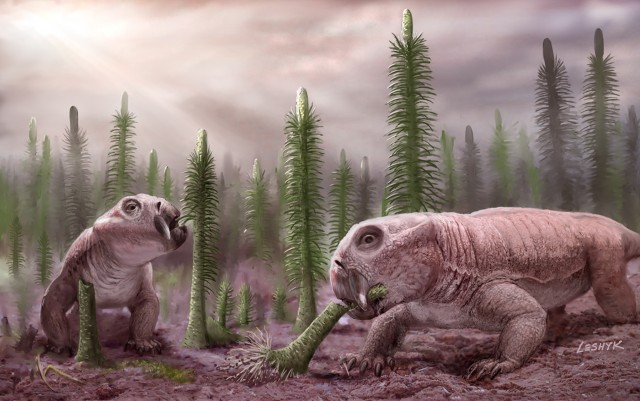A new microbe might have accelerated the Great Dying
Ars Technica » Scientific Method 2014-04-01

The worst time to be alive in Earth's history is absolutely the end-Permian, about 250 million years ago. It is the period when the greatest-ever extinction took place, killing 97 percent of all species. The event was so severe it has been called The Great Dying.
The end-Permian extinction has generally been blamed on massive volcanic eruptions that took place at the same time. But now in a new analysis, researchers at the Massachusetts Institute of Technology argue that the mass extinction event may have been instigated by microbes. These microbes led to a perturbation of the carbon cycle that caused environmental shocks, such as global warming and ocean acidification. The shocks wiped out species in great numbers over a period of tens of thousands of years—a blip on geological scales.
The end-Permian extinction, which took place about 260 million years ago, is the most severe of five known mass extinction events. It killed off the last of the trilobites—a hardy marine species that survived two previous mass extinctions. While land plants survived, almost all forests disappeared. Worst of all, it is the only known extinction event where even insects weren't spared.
Read 16 remaining paragraphs | Comments